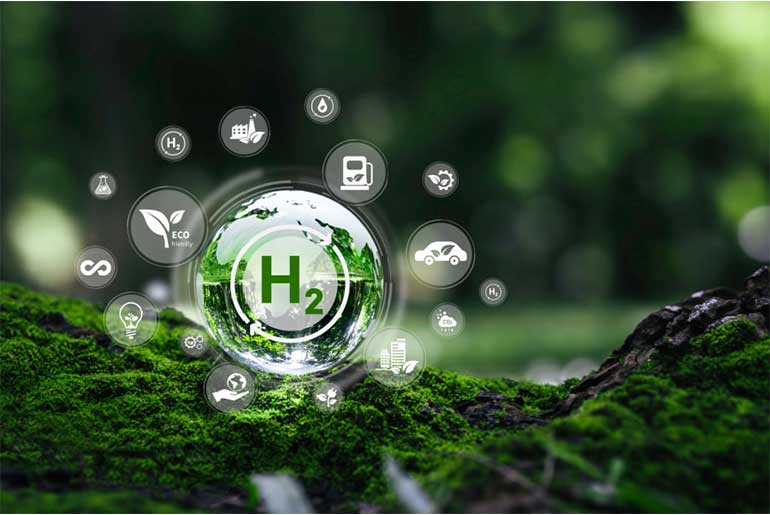The Ministry of New and Renewable Energy (MNRE) has announced that India is targeting a 10% share of the global green hydrogen market by 2030, marking a bold step in the country’s clean energy transition. As part of this push, the government has already allocated over 8.62 lakh tonnes of annual green hydrogen production capacity to 19 companies, while 15 states have introduced policies to support and develop the nascent but rapidly emerging sector.
This announcement was made by Shripad Yesso Naik, Minister of State for Power and New and Renewable Energy, reaffirming India’s commitment to becoming a global leader in green hydrogen production and exports.
Minister of State for Power and New and Renewable Energy Shripad Yesso Naik stated that “these developments are aligned with India’s target to capture 10% of the global green hydrogen market by 2030.”
Speaking at the FICCI Green Hydrogen Summit 2025, Naik said, “India aims to position itself not only as a major producer but also as a global hub for exports. “Our ambition is clear—we want to capture nearly 10 percent of global demand,” he said.
In June 2025, the non-fossil fuel capacity was 246.28 GW which is more than half of the total installed capacity, five years earlier than planned. This saw 119 GW of solar, 52 GW of wind, and 49 GW of large hydro, with 5.1 GW of small hydro as well as almost 12 GW of other sources on top of 8.78 GW of nuclear power.
The target of the government is 500 GW of non-fossil fuel capacity and 5 million tonnes (MMT) of green hydrogen production by 2030. It would need an incremental 125 GW of renewable energy supplied to manufacture hydrogen to meet that target, according to Naik.
This has its foundations on the National Green Hydrogen Mission, which was started in 2023 with a budget of Rs 19,744 crore. It advocates the production of electrolyzers, their demand, research and development, simplified regulations, and alliances internationally.
Investment Momentum Awards
To date, it has granted 15 manufacturers manufacturing capacity of 3,000 MW of electrolyzers. On the production front, 8.62 lakh tonnes of hydrogen capacity by 19 firms have been placed in diagnosis, with 7.24 lakh tonnes of ammonia production currently in consideration. At Rs 52 per kg, bids have been received, officials said.
Gigascale projects, manufacturing plants, pilot mobility programs, and global collaborations are being sponsored by the activities of the private sector. Seventeen states have pre-noticed policies to simplify land releases, bank renewable power and the creation of hydrogen centers.
Additional Secretary at the ministry Sudeep Jain explained this as green hydrogen being a new currency of energy integration and stated that a total investment of Rs 8 lakh crore is likely to be mobilized under the mission, over 6 lakh employment opportunities will be generated, and close to 50 MMT of carbon dioxide will be curbed yearly through the mission.
Jain emphasized that scaling of hydrogen is more than production. It is going to generate a full ecosystem, he stated, identifying demand creation in steel, fertilizer, refining, shipping and infrastructure in storage, transportation and pipeline infrastructure.
In various sectors pilot projects have been initiated. These comprise five steel projects, two ship retrofits with hydrogen bunkers, 37 hydrogen vehicles and 9 fuel stations as mobility pilots. There are 4 developing hydrogen valley clusters in Jodhpur, Bhubaneswar, Pune and Kerala.
As of April 2025 India has already embraced 128 of 140 recommended standards and started a green hydrogen certification scheme. Twenty-three R&D projects have been sanctioned with an investment outlay of Rs. 115 crore, five test facilities have been sanctioned, and proposals are under consideration to set up Centers of Excellence.



